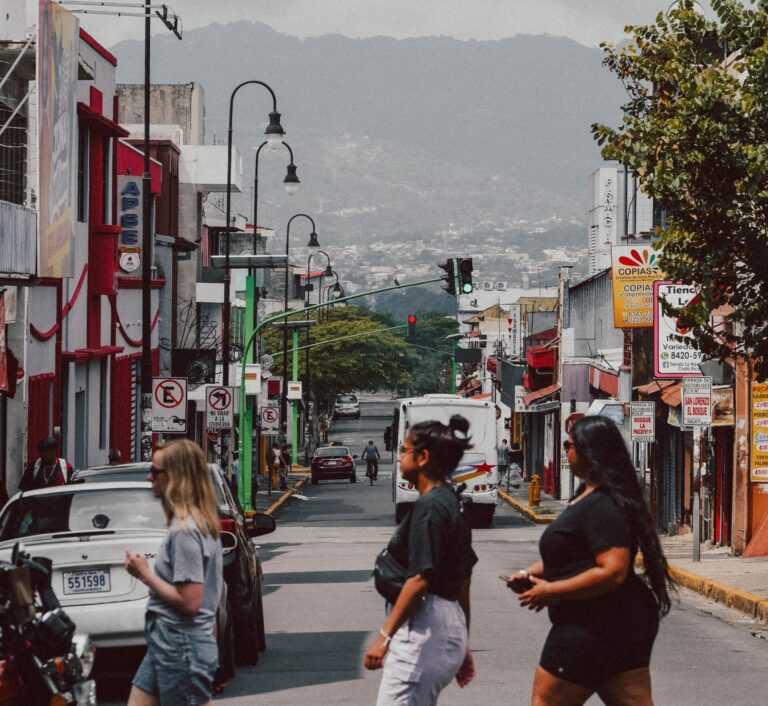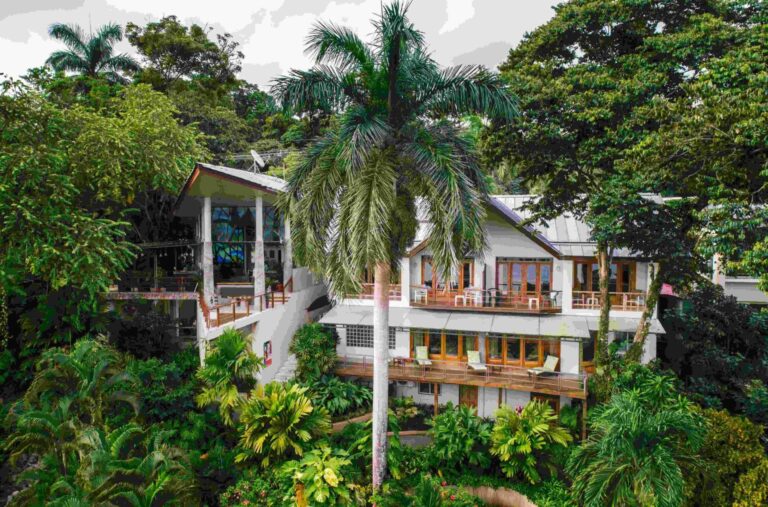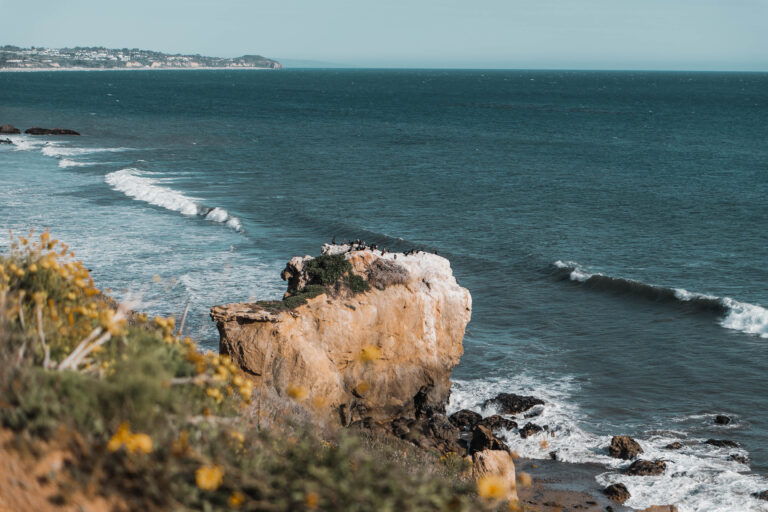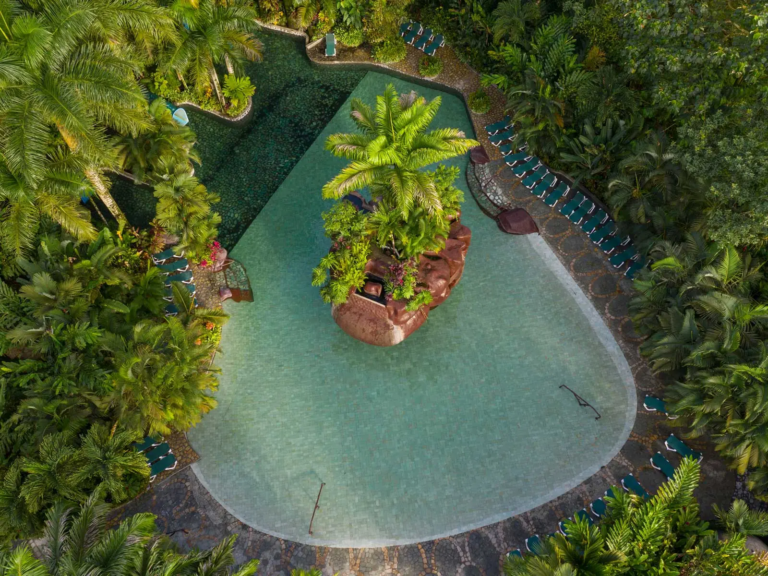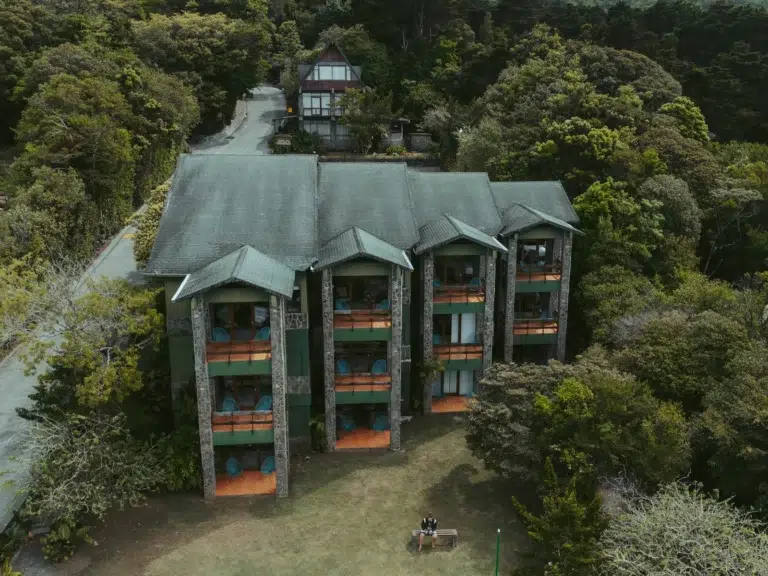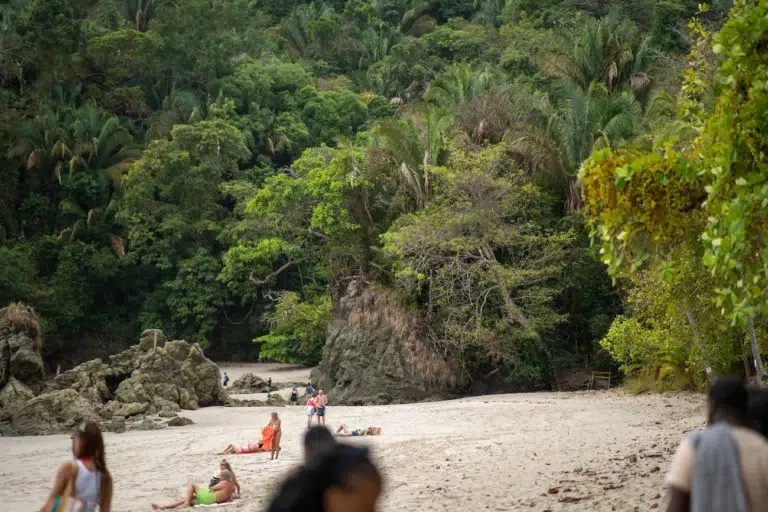14 Most Instagrammable Places in Costa Rica (2024)
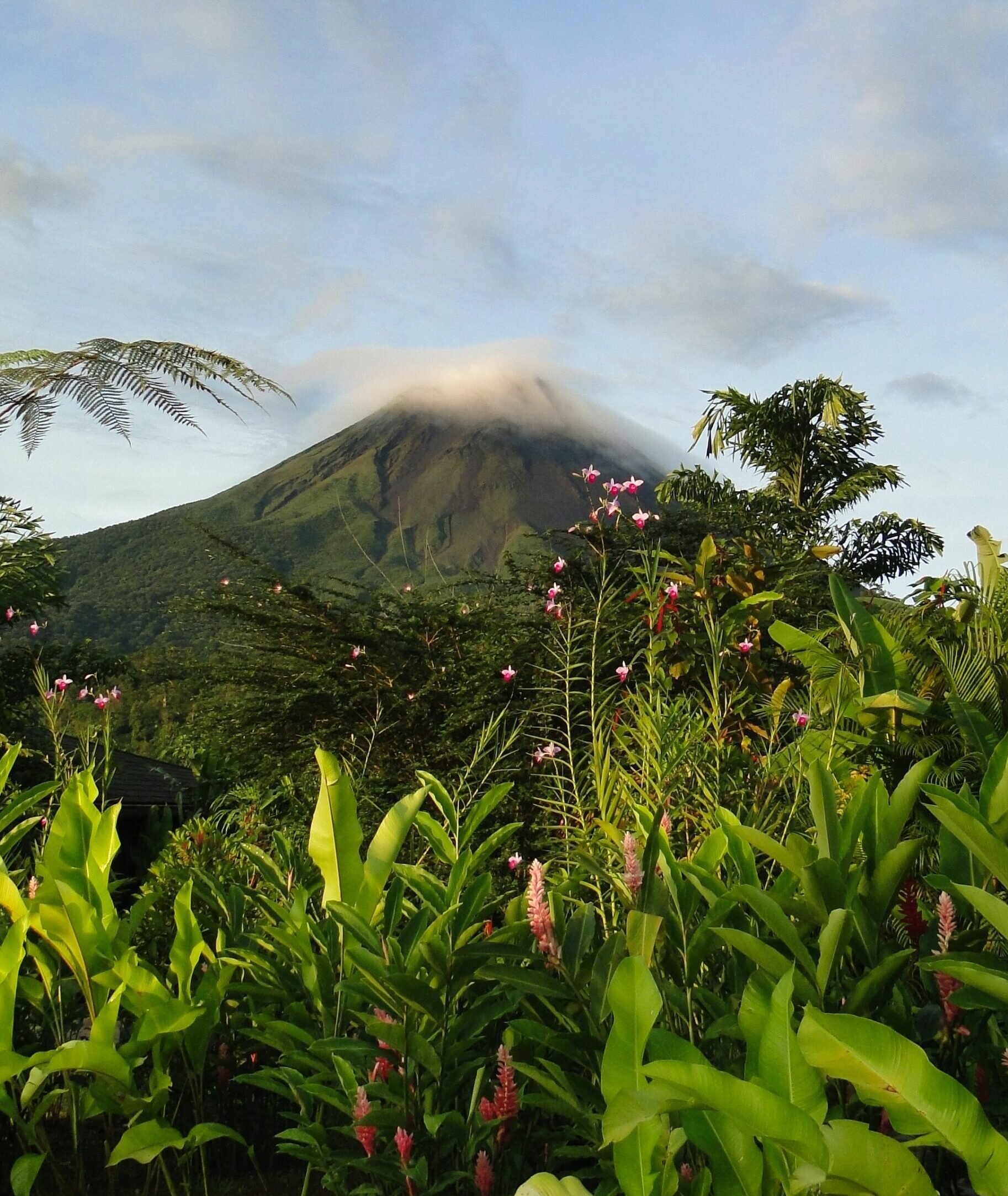
Last Updated on January 4, 2024
There truly is no country quite like Costa Rica. This beautiful country in Central America, oozing with natural scenery and biodiversity, is a haven for picturesque places that any Instagrammer or photographer will fall in love with.
I’m a huge fan of TLC, but when they said “Don’t go chasing waterfalls”, they completely blanked on Costa Rica. The entire country is filled with many unreal waterfalls, idyllic beaches, and lush rainforests, there is no shortage of incredible and breathtaking hot spots in Costa Rica.
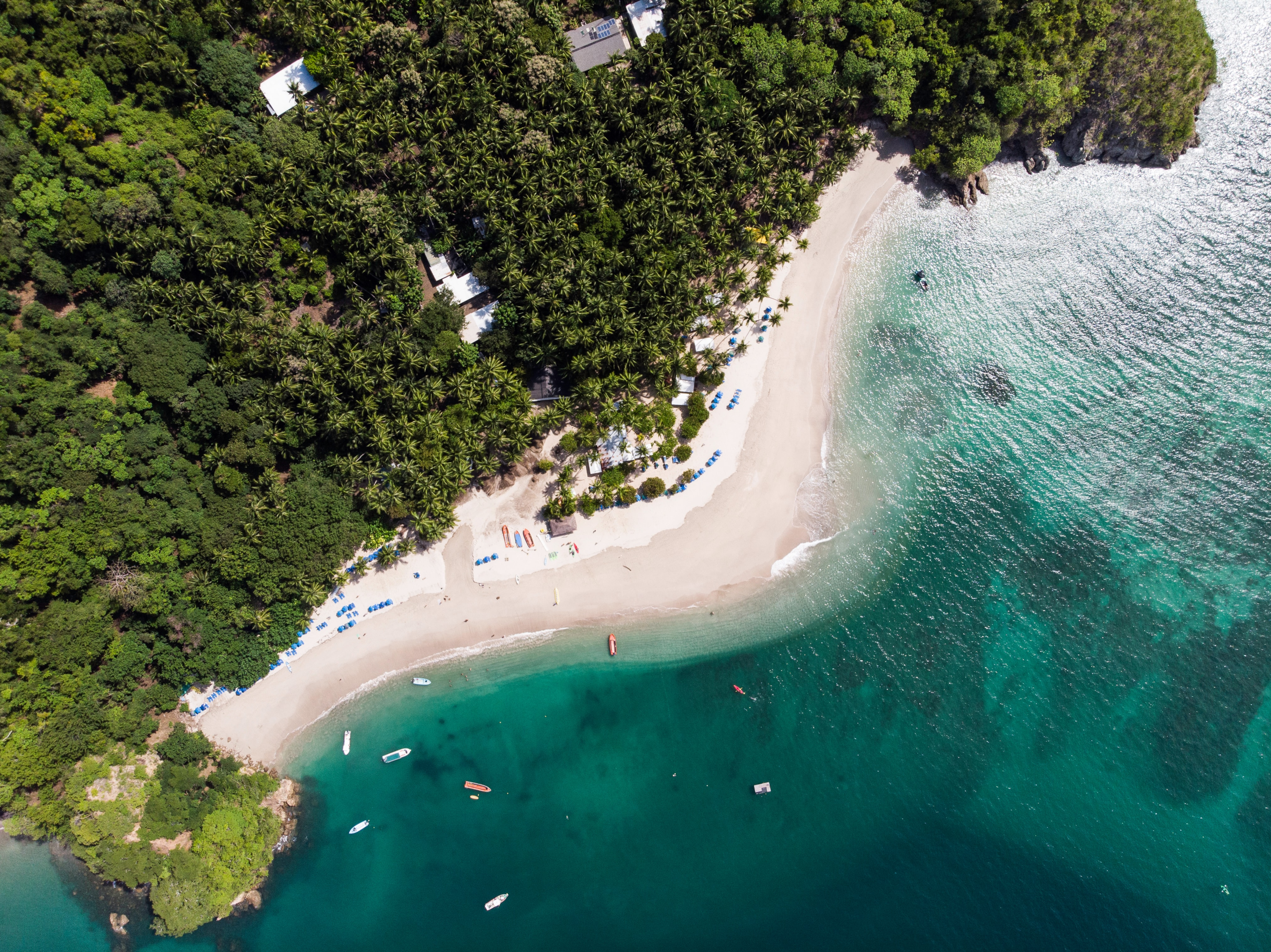
This article provides a curated list of the best Costa Rica Instagram spots, where you can experience the unique combination of stunning landscapes, idyllic beaches, and rare animals. To discover the best gems of this tropical destination, here are the most beautiful places to keep in mind when visiting Costa Rica.
Some links in this post are affiliate links for products and services we personally use and love. Any purchase you make through them supports us at no extra cost to you. Thanks so much!
Getting to Costa Rica
For the most part and unless you’re driving from a neighboring country like Nicaragua or Panama, you’ll get to Costa Rica via a flight into one of CR’s major airports:
- Juan Santa Maria Airport in San Jose (SJO), or
- Danial Oduber Quiros International Airport in Liberia (LIR).
If you’re flying from the U.S., most digital nomads I talk with recommend flying into San Jose (SJO) since it is more central to most of the Costa Rica Instagram spots you’ll find on this list. As far as timing, the best time to visit Costa Rica is in the dry season, which runs from December through April.
Where to Find the Best Instagrammable Spots in Costa Rica
1. Tamarindo Beach, Guanacaste Province, Pacific Coast
When it comes to Costa Rica’s Pacific Coast, Tamarindo Beach is easily one of the most Instagrammable spots you’ll find. This stunning beach located on Costa Rica’s northwest coast is the perfect location for catching a gorgeous sunset, picture-perfect backdrops, crystal-clear waters, and soft white sand.
The surrounding landscape is lush and tropical, with palm trees and a plethora of critters from bird species and monkeys to crocodiles, lizards, and sloths.
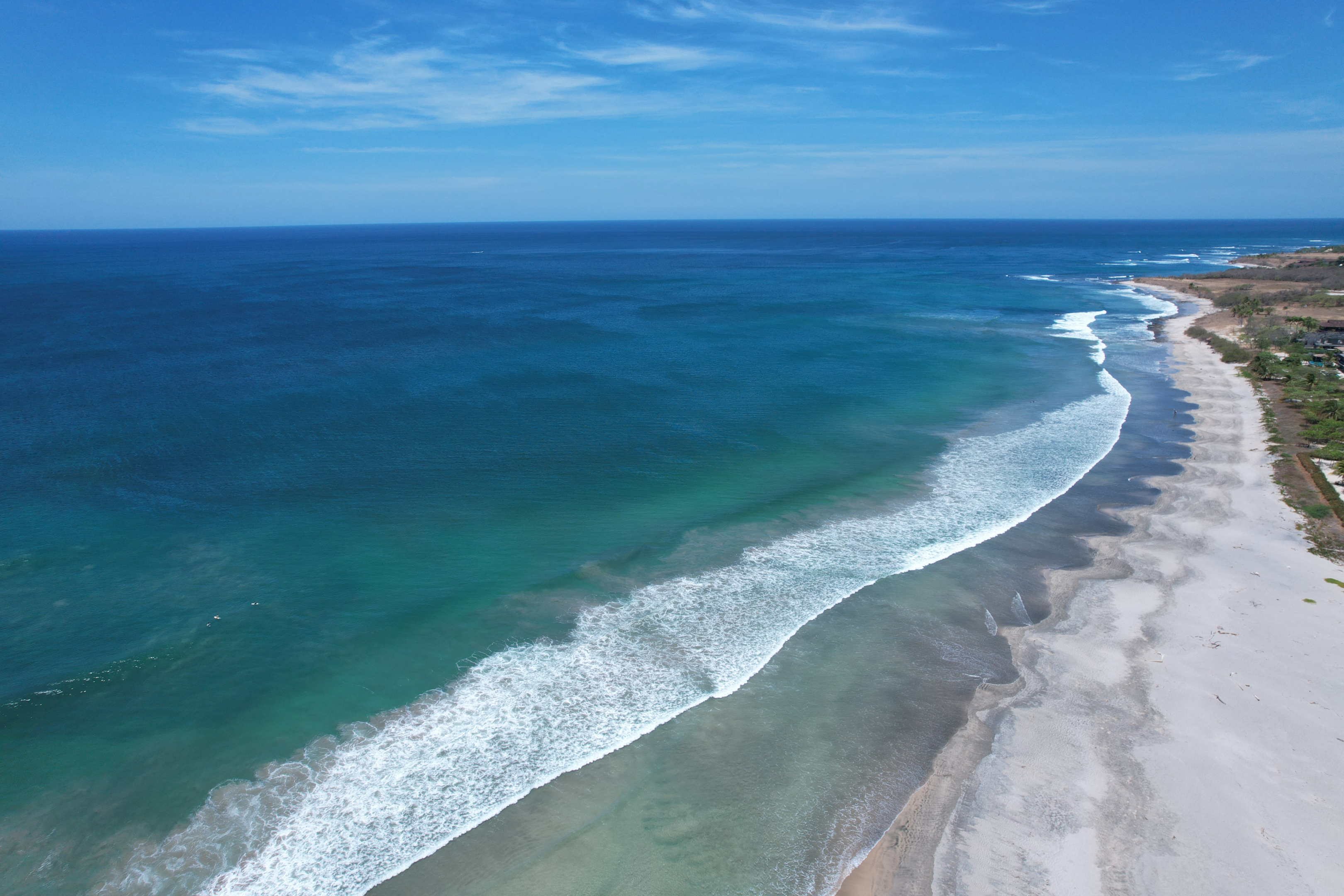
As far as activities, you can either relax on the soft sand, go for a sailing adventure, or even go for some horseback riding. The combination of its rich natural scenery and abundant wildlife makes Tamarindo Beach the perfect place on Costa Rica’s Pacific Coast for photography and it absolutely deserves to be on your Instagram feed.
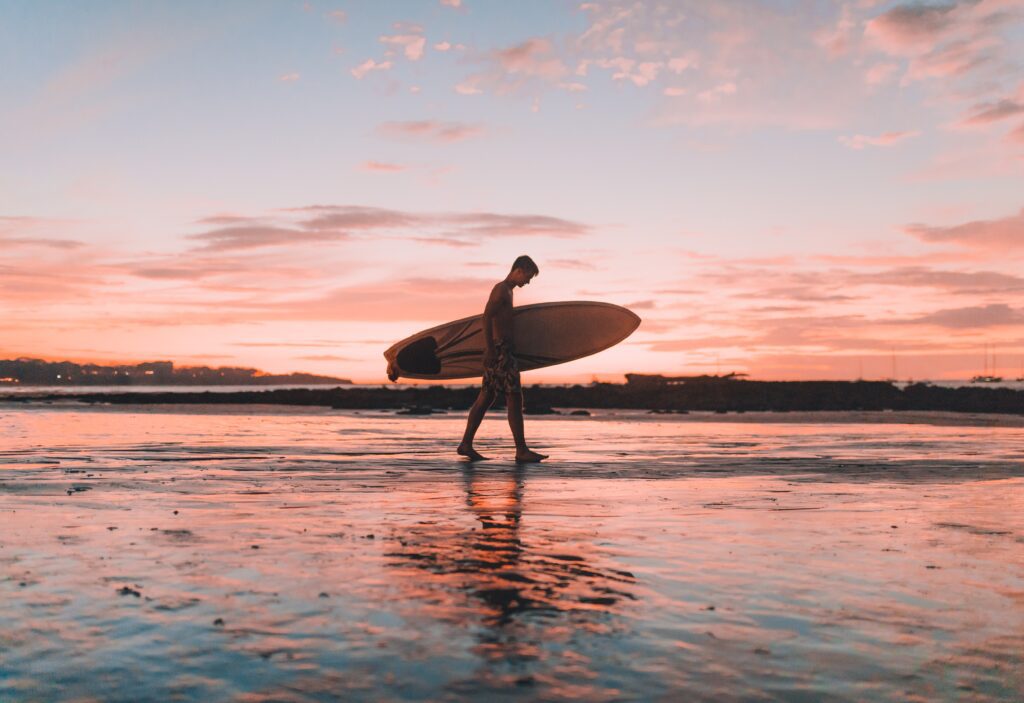
Getting to Tamarindo Beach
Being one of the more popular spots in Costa Rica, travel to Tamarindo Beach is fairly easy. The best way to get to Tamarindo is via car rental, a public bus, or a private shuttle. If you’re flying into Liberia, Tamarindo Beach is only 1 hour away by most methods. I took this private shuttle from Liberia to Tamarindo – it’s rated #1 on TripAdvisor.
Travel from SJO is much longer, and driving with a rental to Tamarindo Beach is about 4-5 hours. If you take a bus, be prepared for a long ride of about 5-6 hours. You can buy your ticket at Terminal 7-10 at the SJO airport or online. Private shuttles take about 4-5 hours. They are a bit more expensive than taking a bus but are much more comfortable and convenient.
2. Rio Celeste Waterfall, Tenorio Volcano National Park, La Fortuna
One of the most Instagrammable spots in Costa Rica by a long shot is the Rio Celeste Waterfall in Tenorio Volcano National Park, celebrated for its turquoise blue color and lush greenery. The water that plunges 98 feet into Rio Celeste Waterfall comes from the Rio Celeste River, which gets its distinctive blue color from a chemical reaction that occurs when volcanic minerals mix with the water.
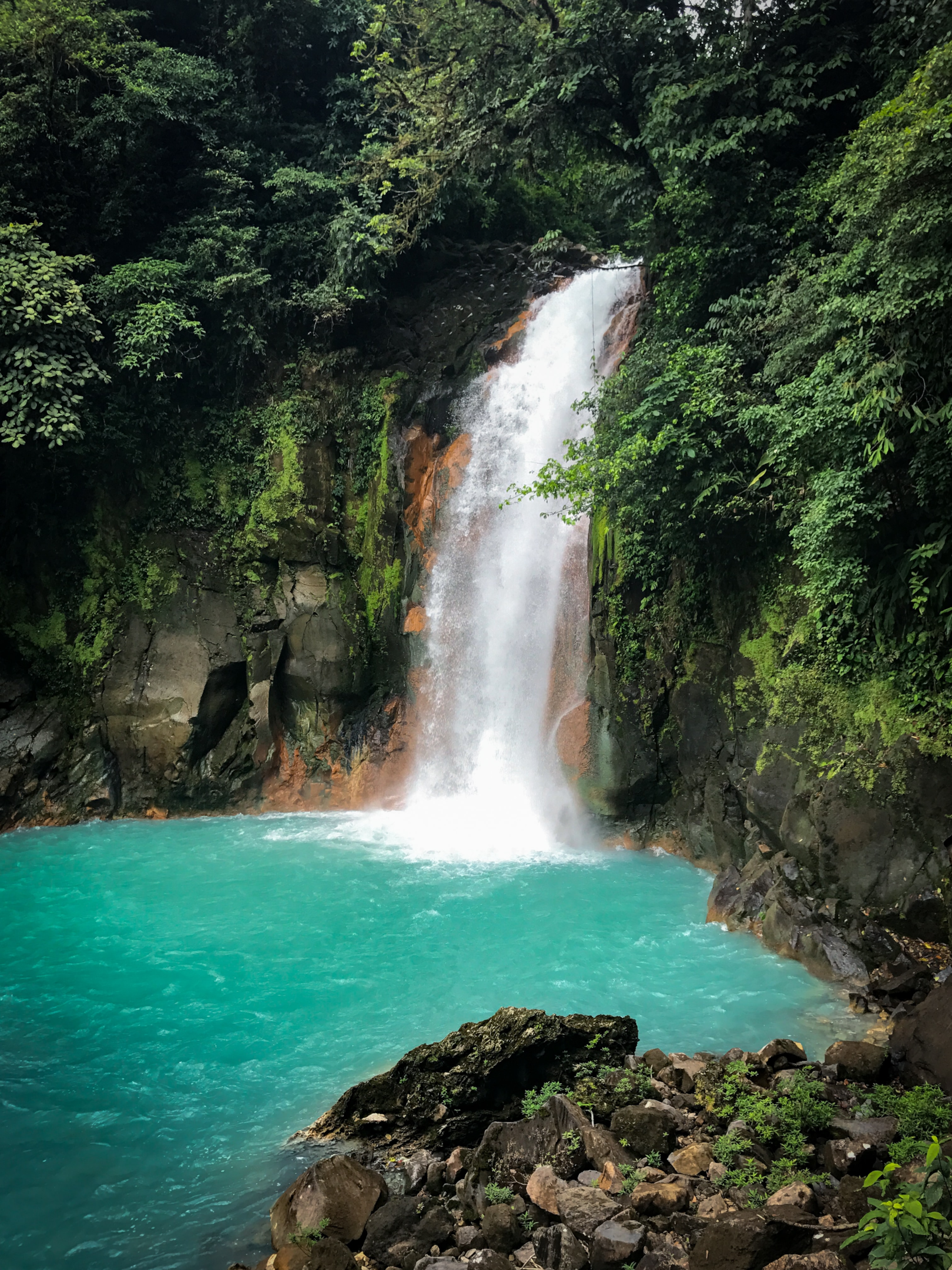
Follow a scenic jungle trail to the iconic waterfall and soak in the views of one of the most beautiful spots in Costa Rica. Truth be told, the Tenorio Volcano National Park area as a whole is very beautiful but Rio Celeste is truly the upper crust of it all.
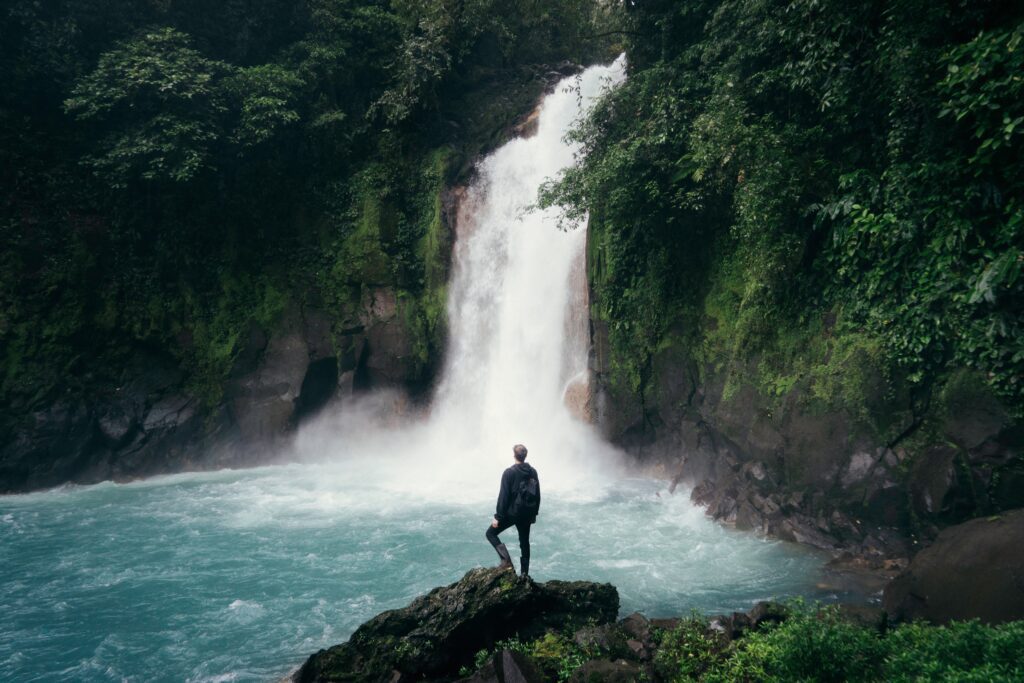
Getting to Rio Celeste Waterfall
Luckily, Costa Rica’s travel options to Rio Celeste are rather easy. The best way to get to the Rio Celeste Waterfall is by taking a quick drive from La Fortuna if you have a rental car. If you don’t, you can book a full-day tour which will provide a to-and-from shuttle service to the area.
3. Mistico Hanging Bridges, Monteverde Cloud Forest, Alajuela Province
Bridges make for some of the best photo ops around, and the Mistico Bridges are some of the most beautiful in the world. Located in the Monteverde Cloud Forest, the bridge network is one of the most picturesque places in Costa Rica thanks to the fact that it’s surrounded by lush vegetation, misty forestry, and bustling wildlife.
The mist and clouds that frequently envelop Monteverde Cloud Forest create a mystical and ethereal atmosphere, while the diverse fauna provides visitors with ample opportunities to view and photograph some of the world’s most unique and beautiful creatures.
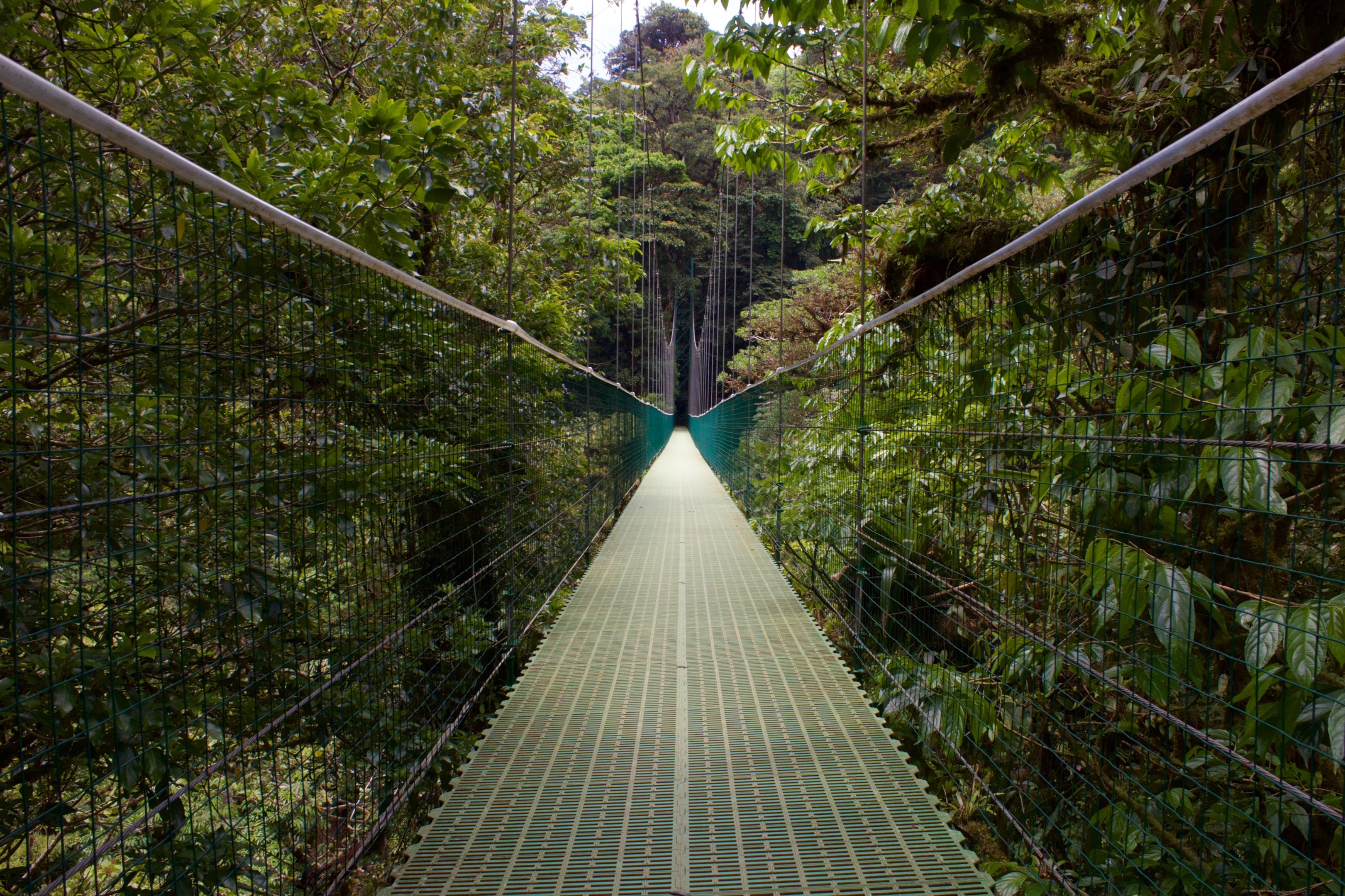
You can enjoy spotting monkeys, sloths, and hundreds of bird species on this guided tour (my tour guide David was amazing!) of the bridges. The Monteverde Cloud Forest Mistico Hanging Bridges is truly one of Costa Rica’s most prized gems for Costa Ricans and tourists alike and I didn’t want to leave.
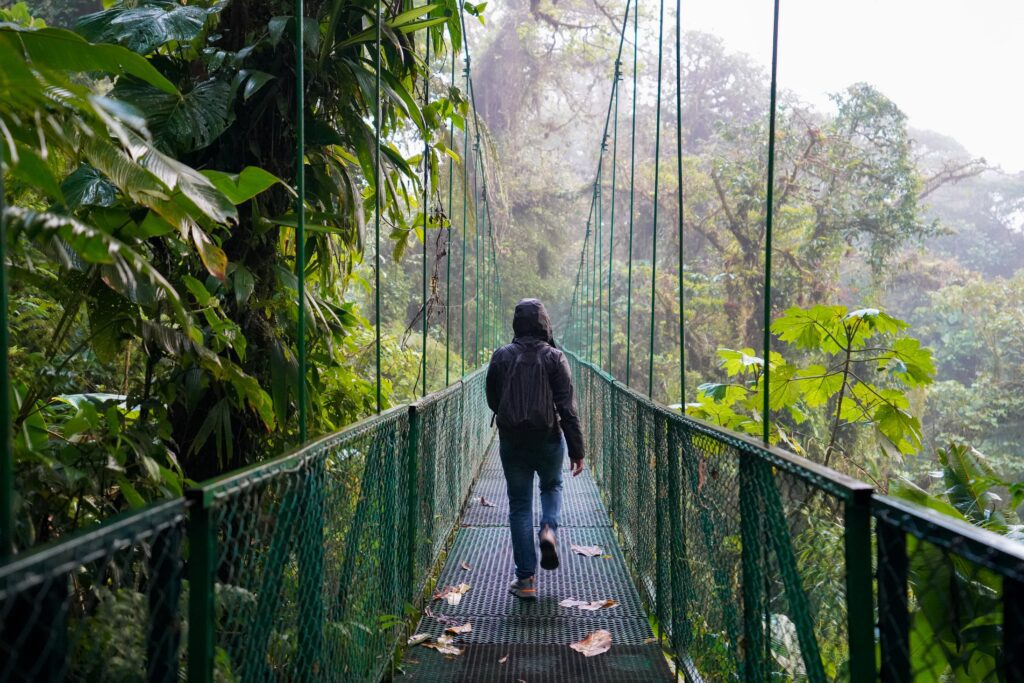
Getting to the Mistico Hanging Bridges
The best way to get to the Mistico Bridges is by taking a quick drive from La Fortuna if you have a rental car. If you don’t, you can book this 3-hour tour which will provide a round-trip shuttle service to the area. Monteverde Cloud Forest is one of the bigger parks in the country, so traveling here is fairly easy. With this destination being a rainforest, be sure to check the road conditions before heading there.
4. Arenal 1968 Volcano Trail, Alajuela Province
Although there are many volcanoes in the country, Arenal Volcano is a truly awe-inspiring sight that makes it one of the most Instagrammable spots in Costa Rica. Arenal isn’t an active volcano and hasn’t had any volcanic activity since its last eruption in 1968, which gives this trail its name. This means we’re in luck and have the luxury of admiring its beauty up close and personal!
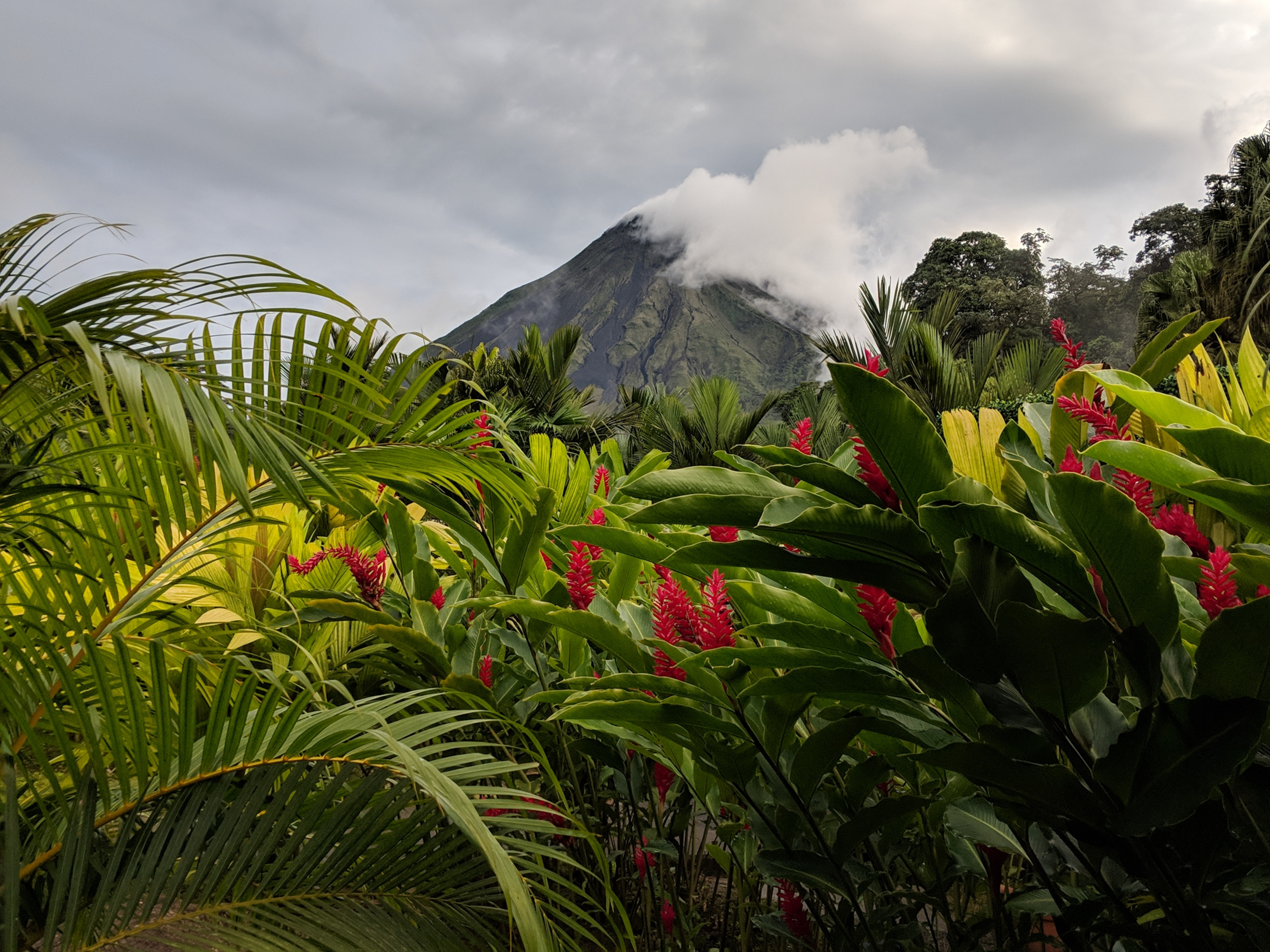
With its towering height and perfectly symmetrical cone shape, the Arenal Volcano commands attention and offers a stunning backdrop, making it a great spot for any photograph. Whether you’re snapping a shot from afar or hiking closer to the base, the sheer size of the Arenal Volcano is enough to take your breath away. Not too many hiking trails can compete.
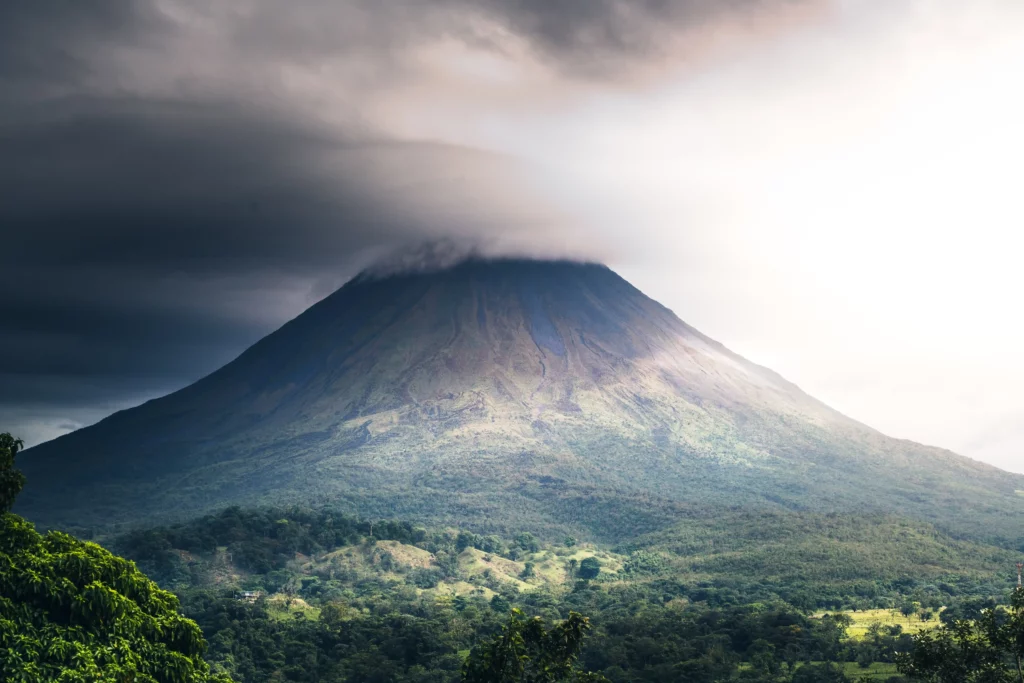
Getting to the Arenal 1968 Volcano Trail
The best way to get to the Arenal 1968 hiking trails is by taking a quick drive from La Fortuna (20 minutes) if you have a rental car. Otherwise, opt for an organized tour like the one we took, which will include a guided tour of the Arenal 1968 trail, the La Fortuna waterfall, the Mistico Hanging bridges, lunch, and that awesomely convenient round-trip pickup service from your hotel. Some tours even offer horseback riding, if that’s more of your jam.
5. Manuel Antonio National Park
A true paradise and home to some of the best beaches in Costa Rica for photography, Manuel Antonio National Park is a must-see on Costa Rica’s central Pacific Coast. The park boasts stunning white-sand beaches, crystal-clear waters, and lush rainforest teeming with local fauna, making it perfect for nature lovers. The contrast of the vibrant blue sea against the lush green jungle makes it an exceptional sight, with rocky cliffs and colorful coral reefs adding to the dramatic landscape.
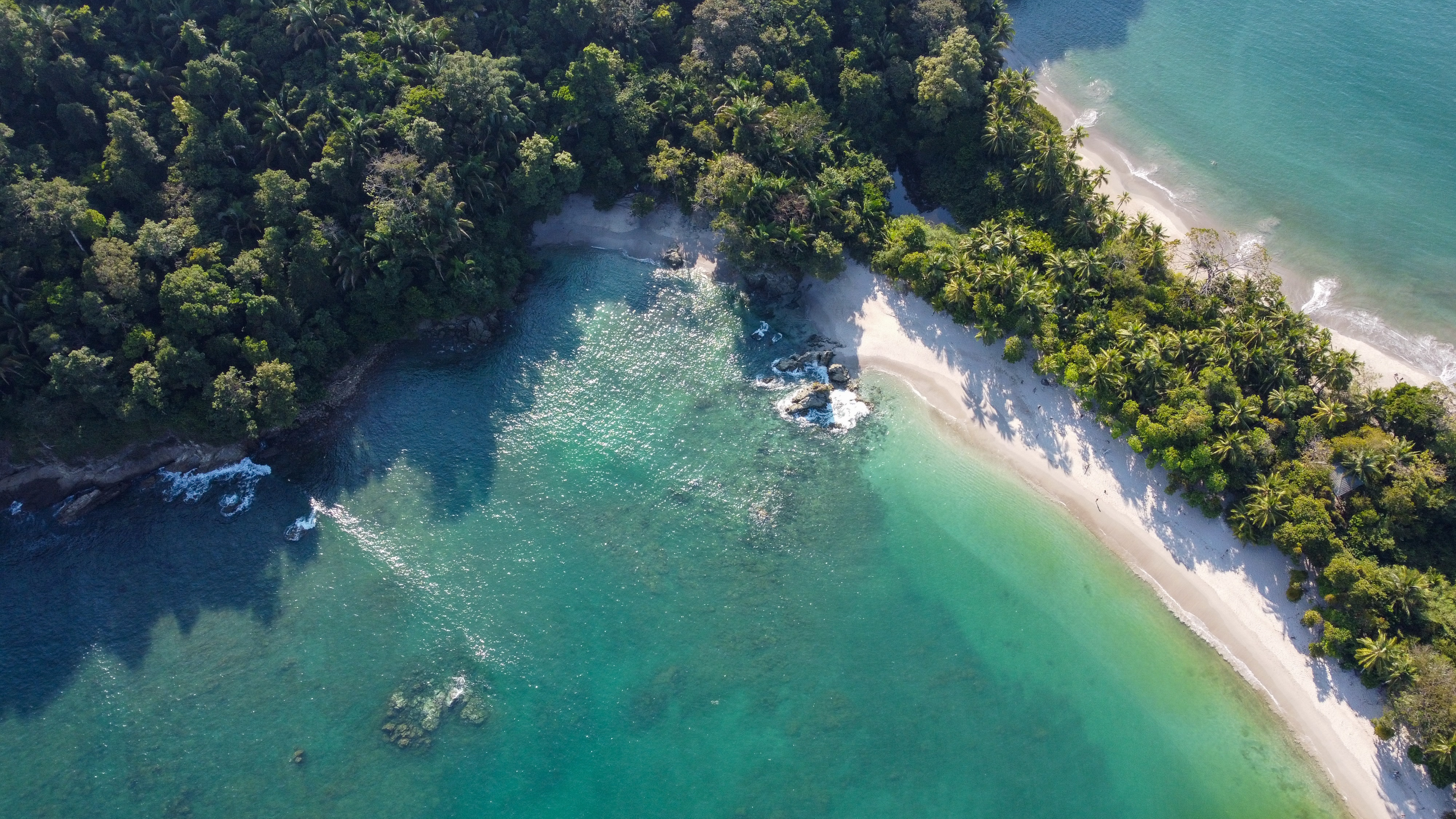
Take a quick hike through the lush forests and encounter a variety of animals, including playful monkeys, sloths, and exotic birds. The beach is a short and easy 20-minute walk through the jungle from the park’s entrance.
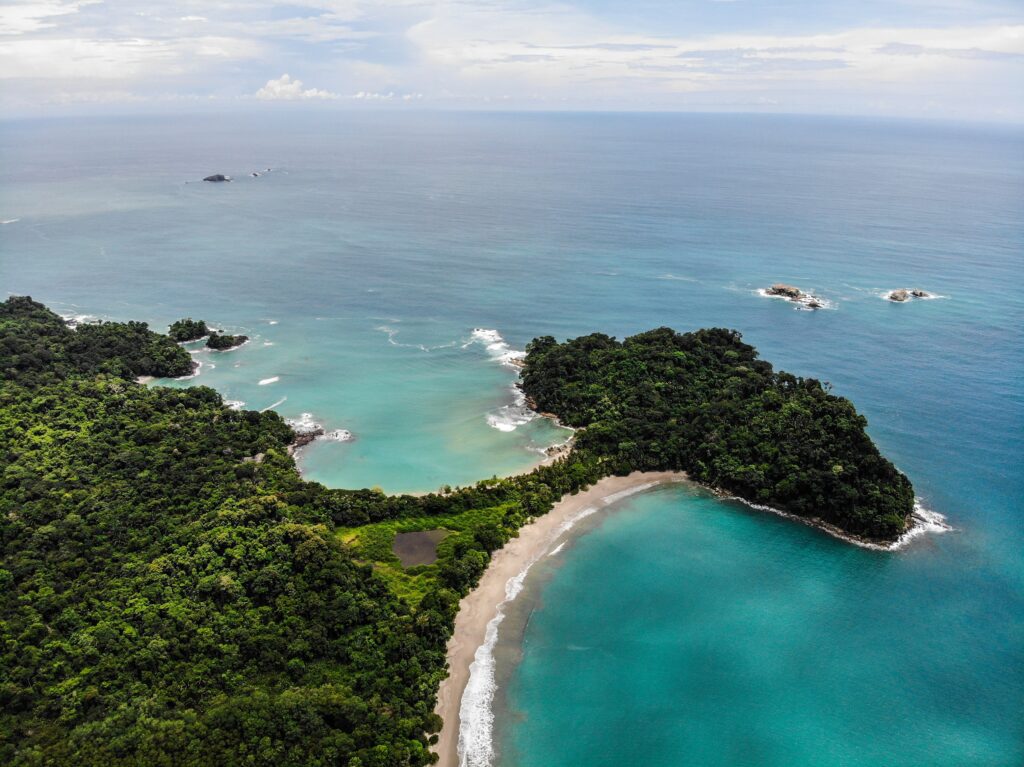
Getting to Manuel Antonio National Park
The best way to get to Manuel Antonio National Park is via car rental, a public bus, or a private shuttle. SJO is the closest airport to the park.
Driving with a rental to the park takes about 3-4 hours depending on traffic. Buses and private shuttles take closer to 4 hours but vary in price (private shuttles are naturally more expensive.
If you’re in Quepos already, then you’re in luck: Manuel Antonio National Park is only a 10-15 minute drive away.
6. La Fortuna Waterfall, Alajuela Province
La Fortuna Waterfall is one of Costa Rica’s most beautiful (and popular) destinations, with its breathtaking cascading light blue waters and the lush tropical forest that surrounds it. At over 200 feet (60 meters) tall, the waterfall is a true spectacle, and the turquoise blue pool that forms at the base of the waterfall is crystal clear and inviting. Costa Ricans and visitors equally love this gem of a destination, as it is one of the most Instagrammable spots in the country.
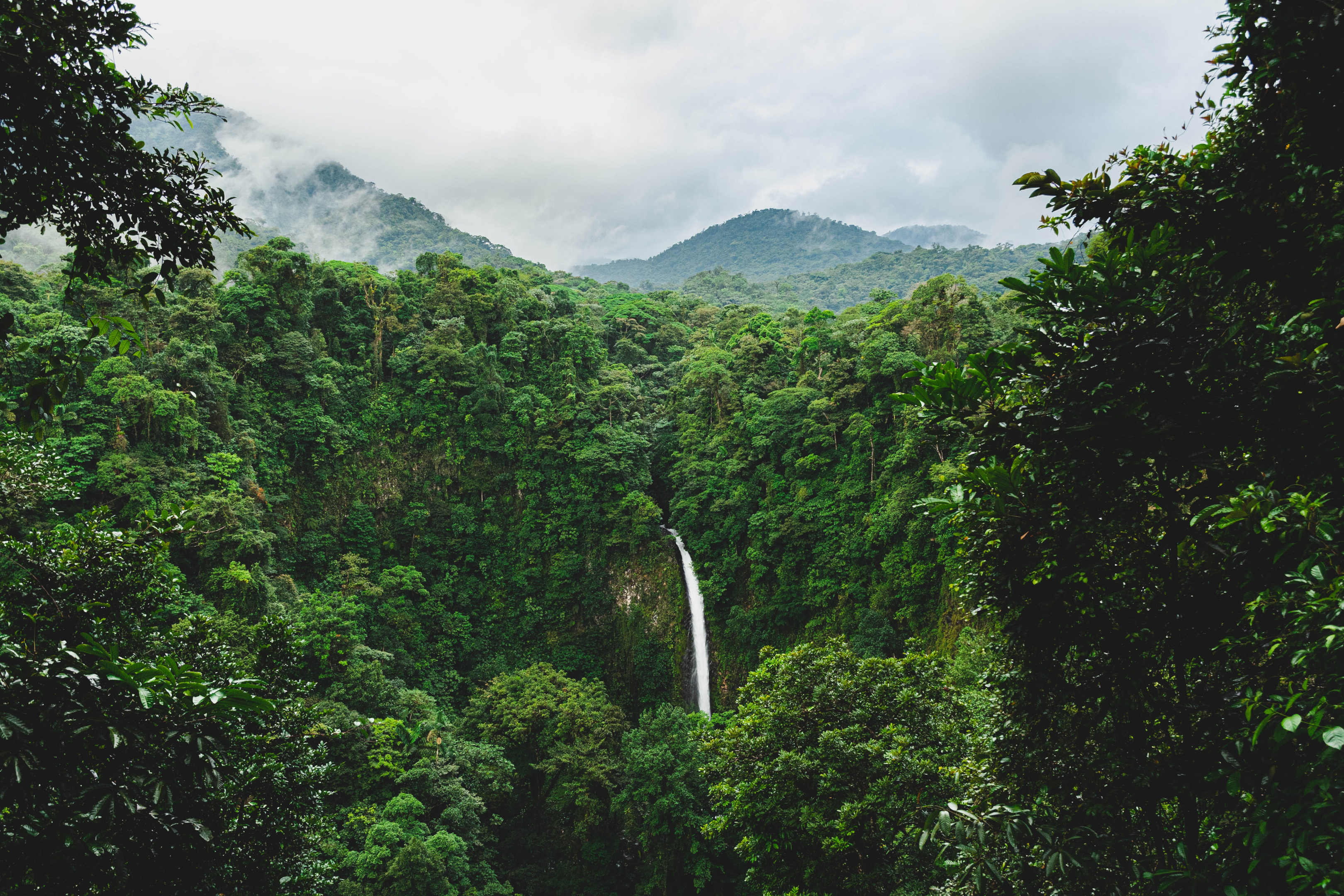
I took this all-inclusive tour which provided an immersive hike down to the base of the waterfall and take a refreshing swim in the cool waters as a special treat!
Getting to the La Fortuna Waterfall
The best way to get to the La Fortuna Waterfall is by taking a quick drive from, well, La Fortuna if you have a rental car. If you don’t, you can book an all-inclusive tour which will provide a round-trip shuttle service to the area.
7. Corcovado National Park, Osa Peninsula
Located on the Osa Peninsula in southern Costa Rica, Corcovado boasts some of Costa Rica’s most remote and untouched wilderness areas. This area is wildly biodiverse with 13 different ecosystems. In fact, it’s home to 2.5% of the world’s biodiversity alone! This makes it the perfect destination to visit for nature enthusiasts and travel bloggers alike.
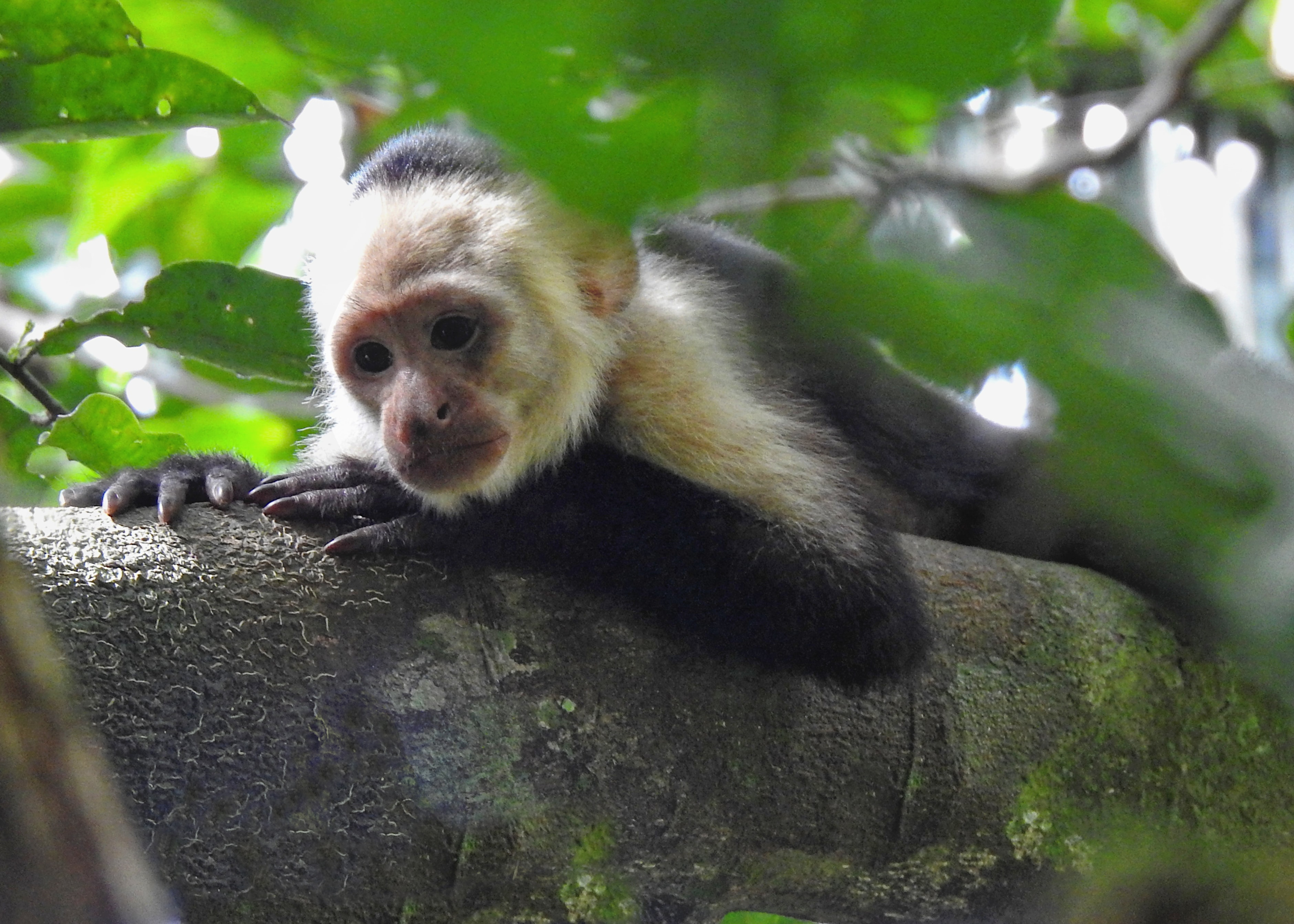
Wander through its dense rainforest and take some great photos of a variety of exotic animals, such as scarlet macaws, monkeys, sloths, and margay leopards. The park also boasts some of the most beautiful and unspoiled beaches in Costa Rica, with pristine stretches of white sand and turquoise blue waters.
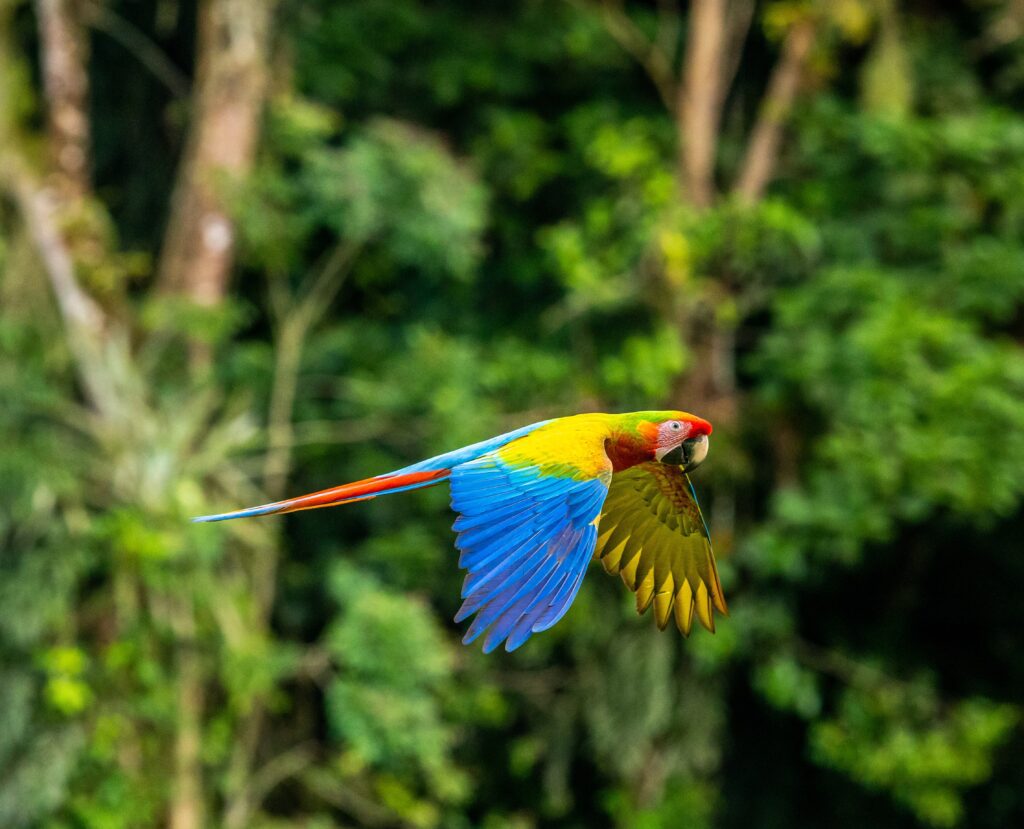
Getting to Corcovado National Park
Corcovado National Park is one of Costa Rica’s more remote options on this list, and travel can take a bit longer. However, it’s absolutely worth it. Here are a few ways to get there:
- By car: You can rent a car and drive to Corcovado National Park. The drive takes about 7-8 hours from San Jose and about 4-5 hours from Quepos. Keep in mind that road conditions can be challenging in some parts, especially during the rainy season.
- By bus: You can take a public bus to the nearby town of Puerto Jimenez, which is located near the entrance of Corcovado National Park. The ride takes about 8-9 hours from the SJO airport and about 6-7 hours from Quepos.
- By plane: You can take a domestic flight from SJO airport or Quepos to Puerto Jimenez, which is located near the entrance of Corcovado National Park. A few airlines offer flights to Puerto Jimenez, such as Sansa and Nature Air.
- By boat: You can also opt to take a boat from the town of Sierpe to the ranger station in Corcovado National Park. The boat ride takes about 1-2 hours, depending on weather conditions.
8. Cahuita National Park, Caribbean Coast
Cahuita National Park is one of the best photo op spots on Costa Rica’s Caribbean Coast that offers visitors a bite-size look into the stunning natural beauty of the Caribbean coast. The park boasts pristine white sand beaches, clear turquoise waters, and vibrant coral reefs that are swimming with a variety of marine life.
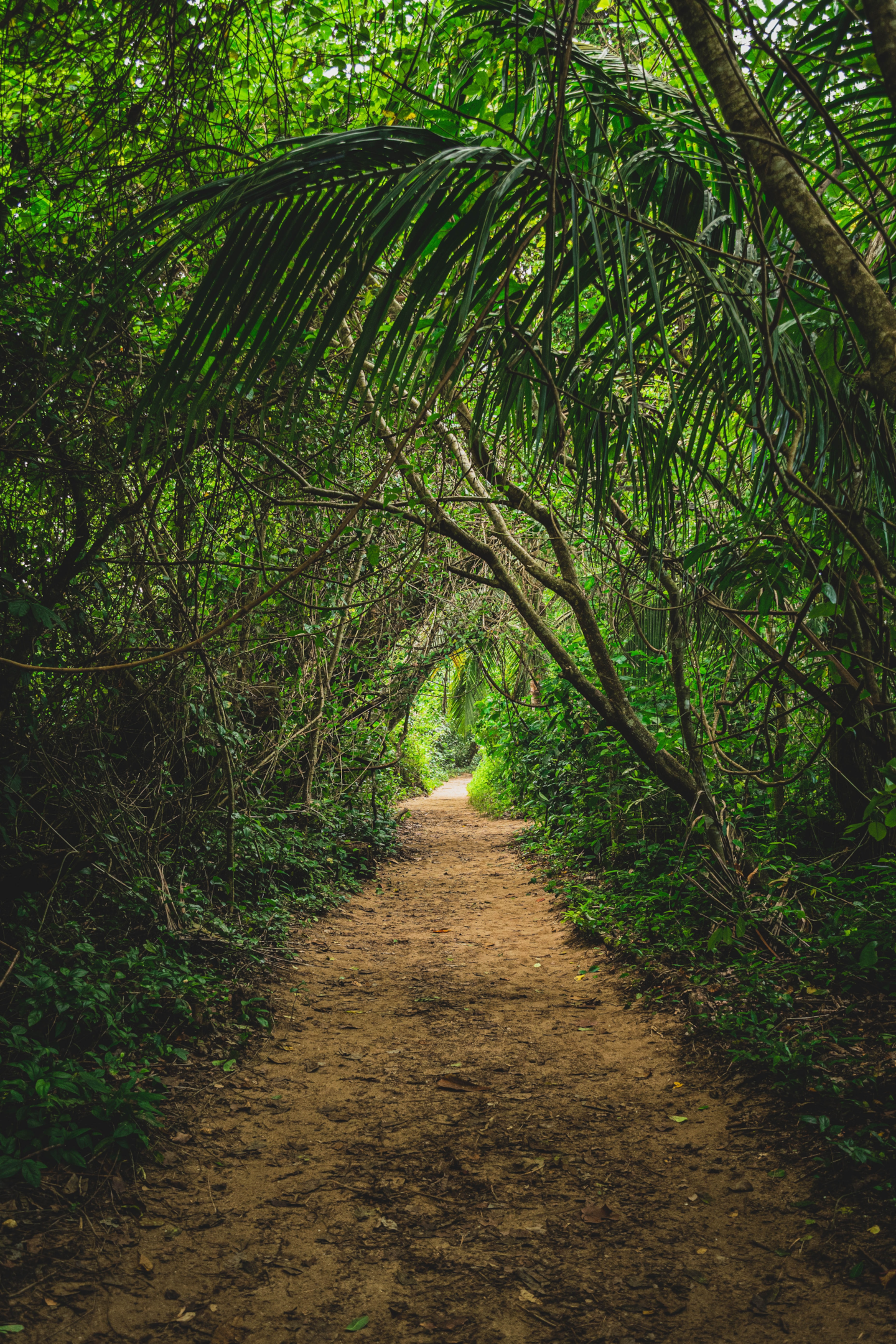
There’s also a picturesque trail system winding through the rainforest and along the coast, providing Caribbean and forest views. See rare species, snorkel in the sea, and soak up this nature lover’s paradise. Base yourself in vibrant Puerto Viejo to make the most of your time!
Getting to Cahuita National Park
By car, it’ll take you about 4-5 hours from SJO and about an hour from Limon. A bus takes a bit longer from each destination due to many stops along the way. Although you can opt to take a taxi, I don’t recommend it as it can be quite pricey. If you stay in Puerto Viejo, you’ll be a lot closer to the action as well.
9. Playa Santa Teresa, Nicoya Peninsula
Playa Santa Teresa is a stunning destination celebrated for its pristine surf-friendly beaches, lush tropical jungle, and laid-back atmosphere. The area boasts some of Costa Rica’s most beautiful and secluded beaches, with crystal-clear waters and white sand stretching for miles.
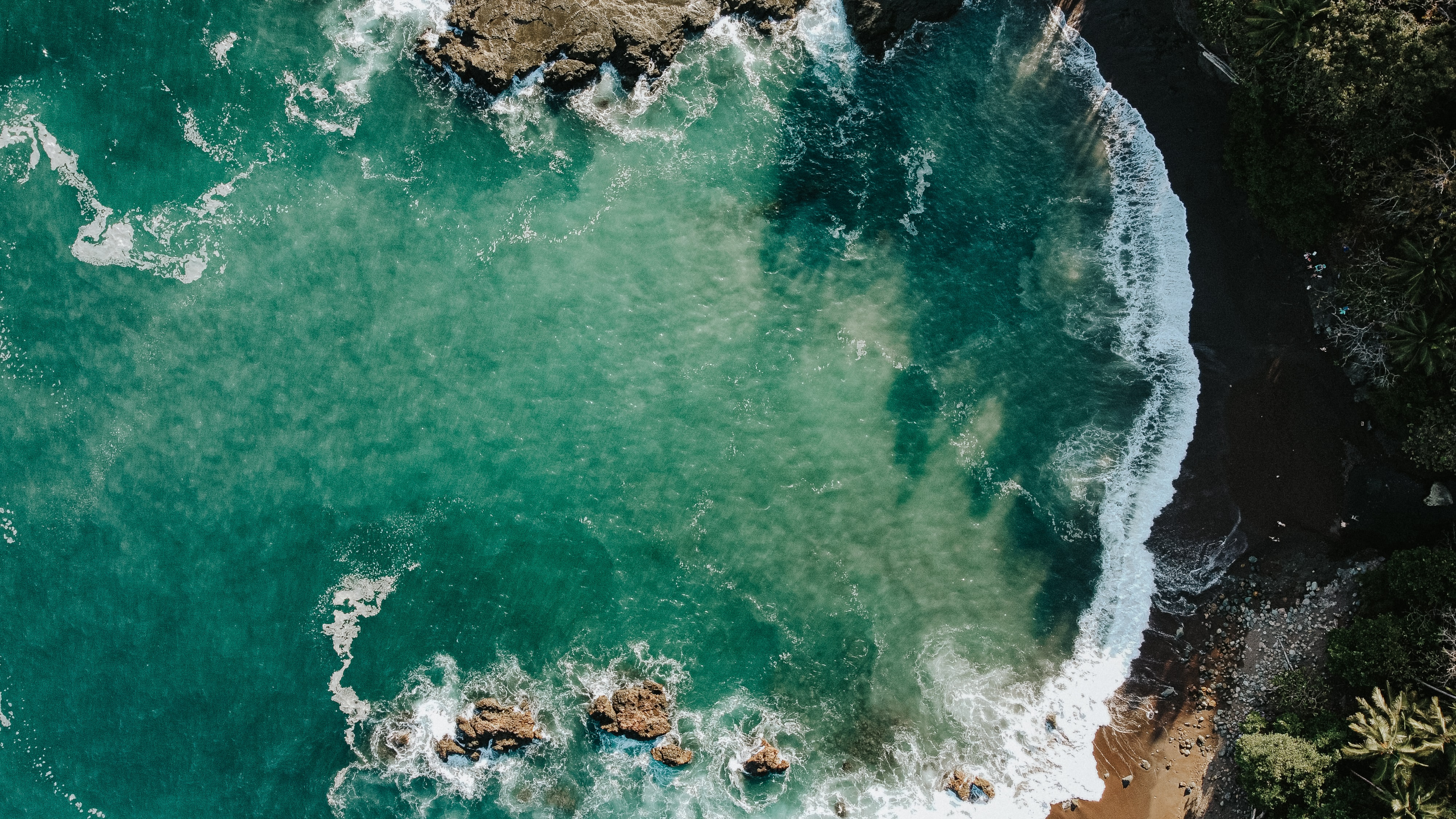
Montezuma Beach (above) is easily one of the most well-known beaches in this area and is especially beautiful at sunrise and sunset. It makes for the perfect destination for great surfing and water sports as well!
The surrounding jungle is home to an abundance of local fauna, including howler monkeys, exotic birds, and a variety of reptiles. If you’re into sunset photography, you can catch amazing views here in Santa Teresa.
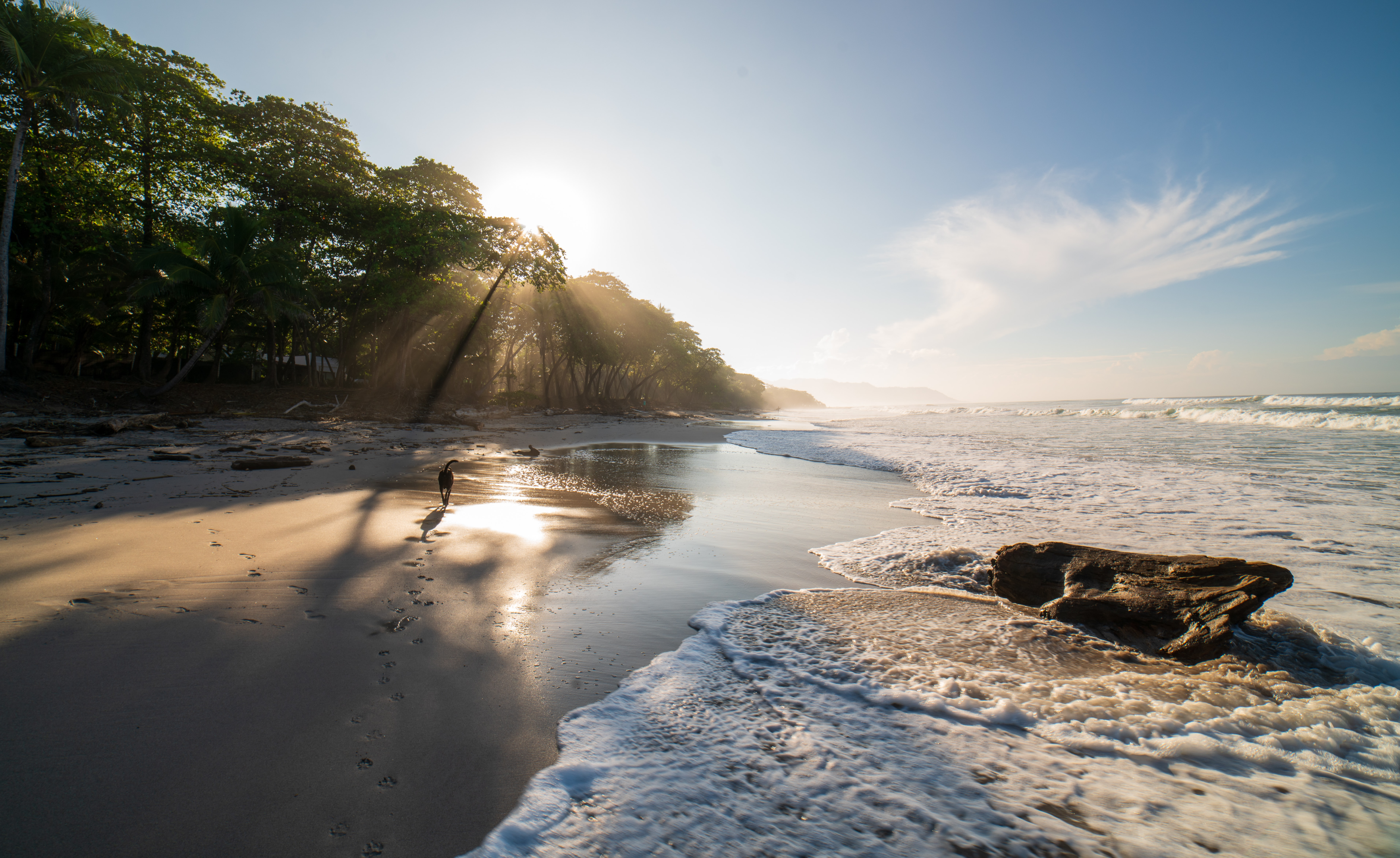
Getting to Santa Teresa
Traveling to Santa Teresa is unfortunately rather rough, especially by ground. Therefore, the best way to get here is by a quick plane right into Tambor, with the quickest flight (about 40 minutes) being from SJO airport. You can then book a shuttle or taxi to the beach or wherever you’d like to visit.
10. Tortuguero National Park, Caribbean Coast
Tortuguero National Park is nestled on CR’s Caribbean coast and is only accessible by boat or plane, adding to its remote and untouched beauty. The park’s extensive canal system winds through the lush rainforest and offers an opportunity to see a variety of animals, including numerous types of sea turtles.
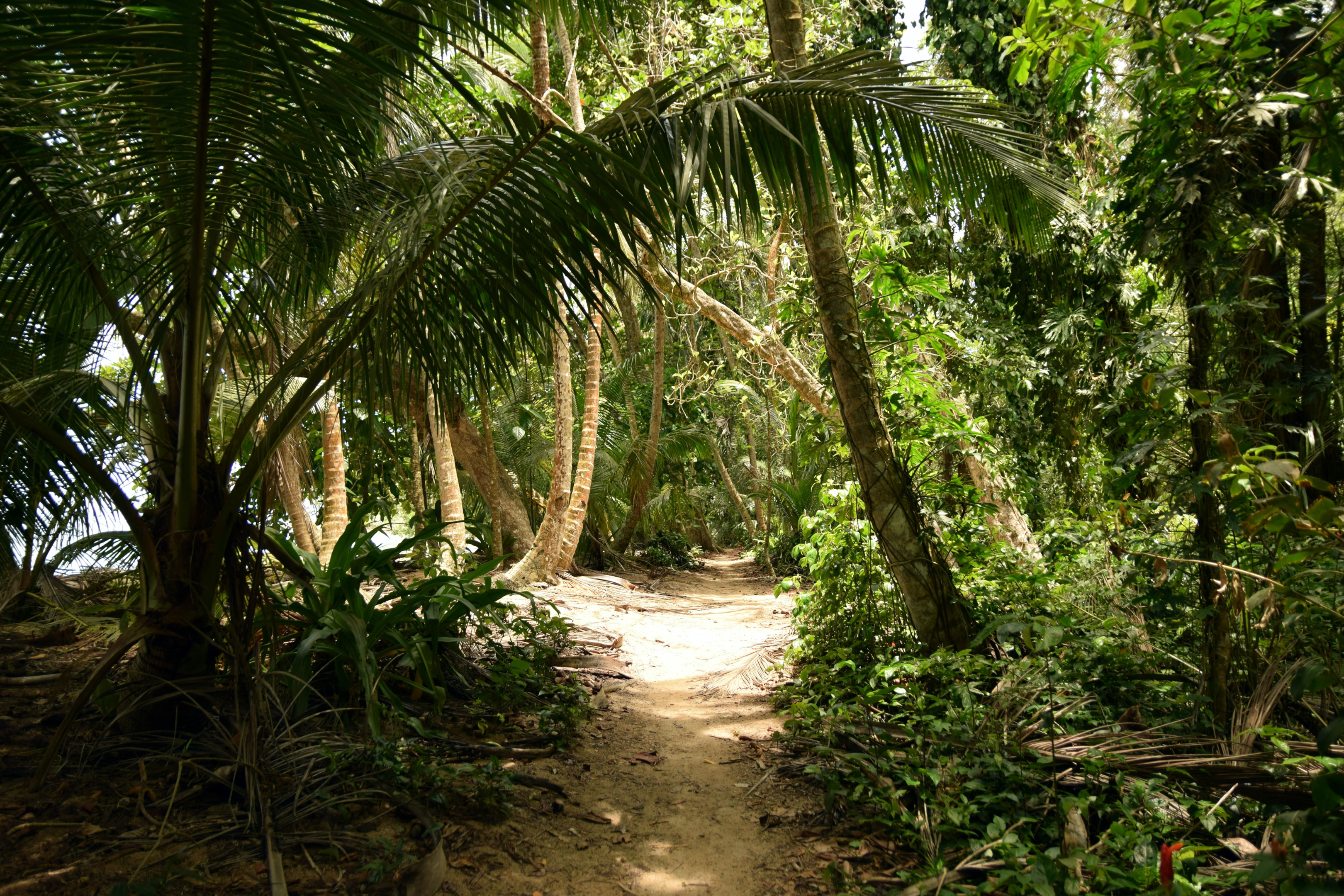
The incredible combination of untouched landscapes, abundant wildlife, and pristine beaches makes Tortuguero National Park one of the most beautiful and unique places to visit in Costa Rica.
Getting to Tortuguero National Park
Being yet another more remote area of the country, the best way to get to Tortuguero National Park is by plane. Carriers such as Sansa and Aerobell both offer flights from SJO airport to the park’s landing strip, a 60-minute flight. From there, you can take a quick boat ride to the main area of the park where your lodging may be.
11. Poás Volcano National Park, Alajuela Province
Home to some of Costa Rica’s top natural spectacles, Poas Volcano National Park showcases a towering active volcano with valley and tropical forest views. The park’s main attraction, however, is the massive crater lake that is over a mile wide.
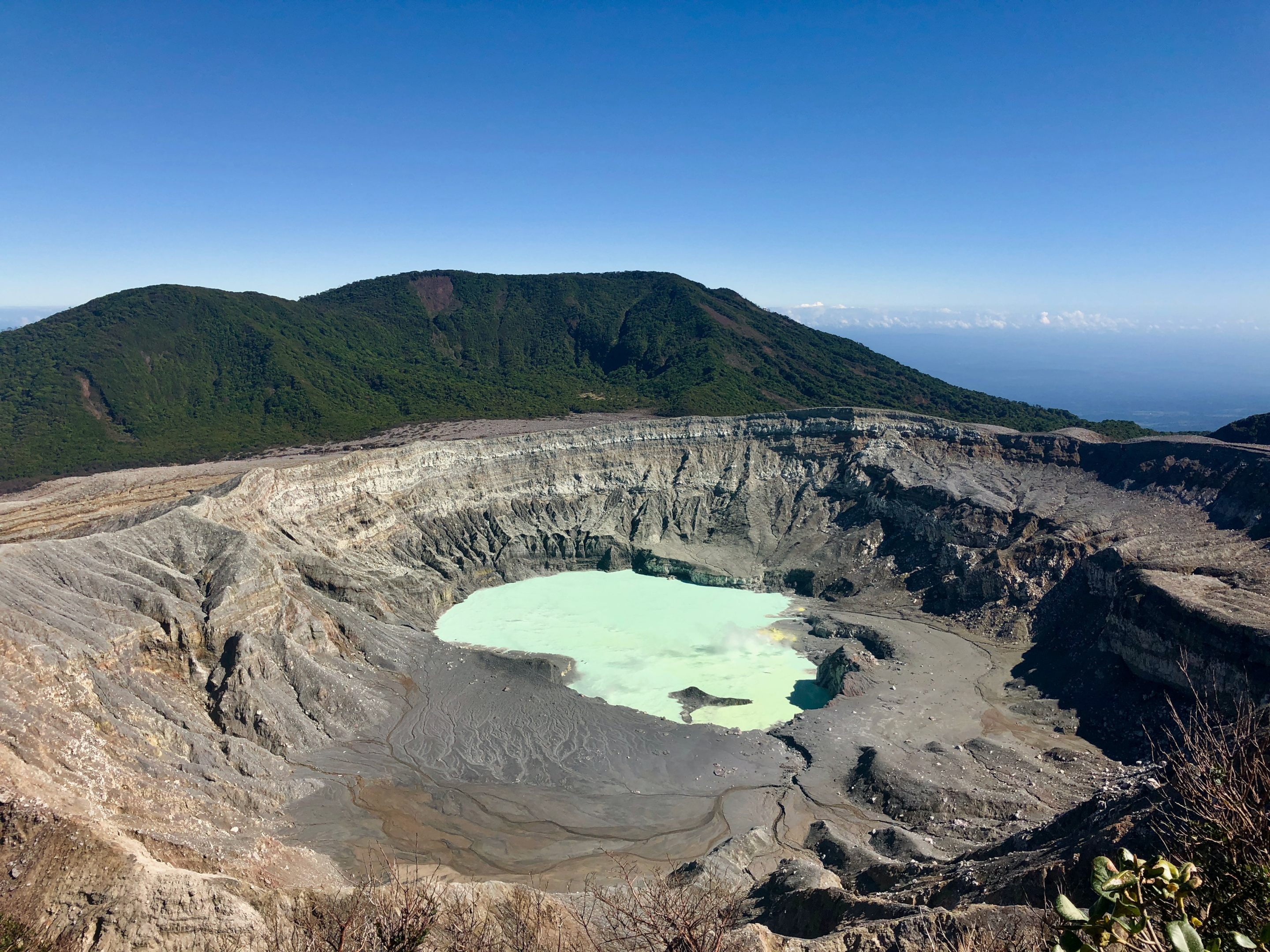
This beautiful crater lake is filled with uniquely bright turquoise water, creating a surreal and otherworldly atmosphere that is perfect for capturing stunning photos. Needless to say, the Poas Volcano is one of the most photo-worthy places to visit in Costa Rica.
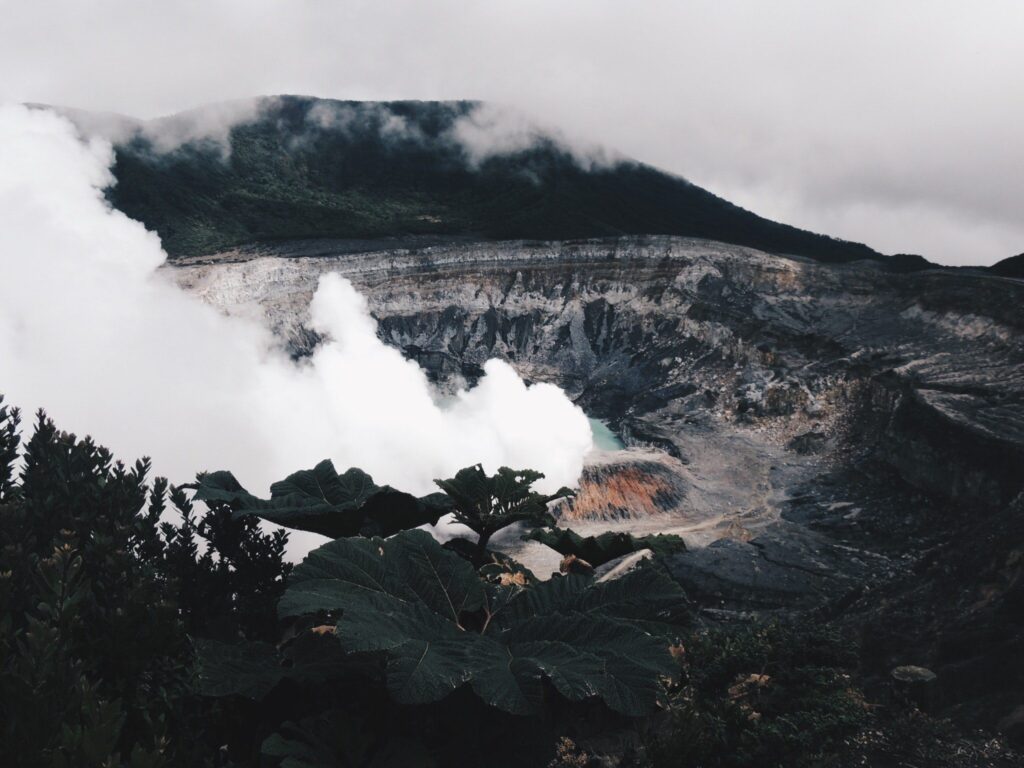
Getting to the Poas Volcano
Poas Volcano is roughly 1.5 hours away from SJO. Luckily, Poas Volcano Park is one of the larger parks in the country and therefore is very accessible via bus, taxi (which can be rather pricey), private shuttle, or by rental car.
12. Playa Uvita, Marino Ballena National Park
Marino Ballena is one of Costa Rica’s lesser-known national parks, but it doesn’t mean it’s any less amazing. Nestled within the southern Pacific Coast’s Marino Ballena National Park, Playa Uvita is one of the best beaches in Costa Rica for photography.
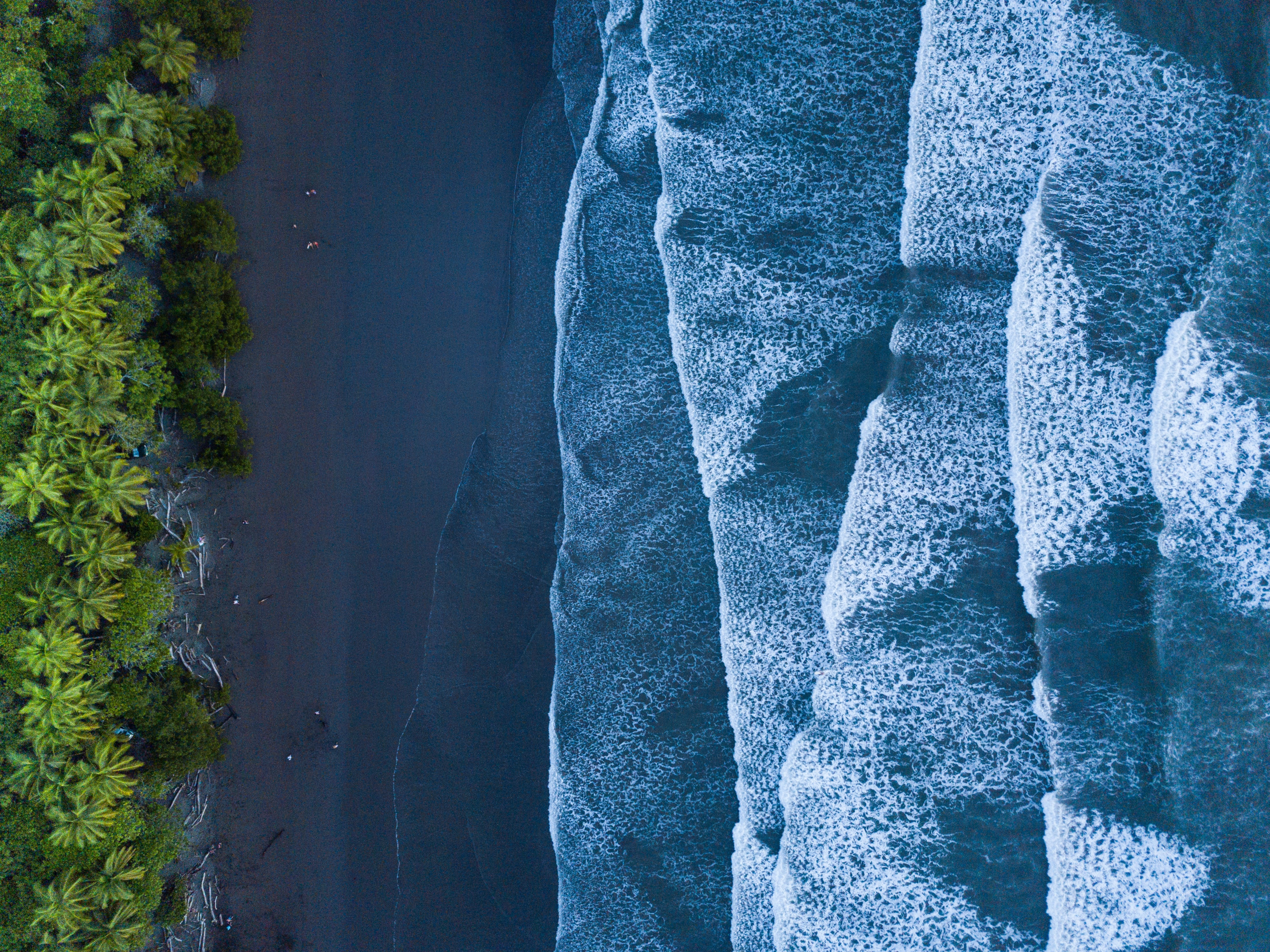
Its unique shape, long white sandy shores, and tropical jungle location make it a picture-perfect dream. At low tide, the beach creates an unusual sandbar known as the “Whale Tail”, coined for the long stretch of sand and rock that extends into the ocean.
Getting to Playa Uvita
The best way to get to Playa Uvita is to fly into SJO airport and then catch a bus to Quepos. You can then catch another bus directly to Playa Uvita, which would then be a quick drive away. If you prefer air travel, you can fly into the Palomar Sur Airport and then drive to the beach, a short distance away.
13. Tarcoles Crocodile Bridge
Tarcoles Crocodile Bridge is a very popular tourist spot located on the Tarcoles River in Costa Rica. The bridge, which is situated on the Inter-American Highway, is known for, you guessed it, the large number of crocodiles that can be seen from it. It’s the only place on this list where you’re really only visiting to see wildlife rather than a scenic view.
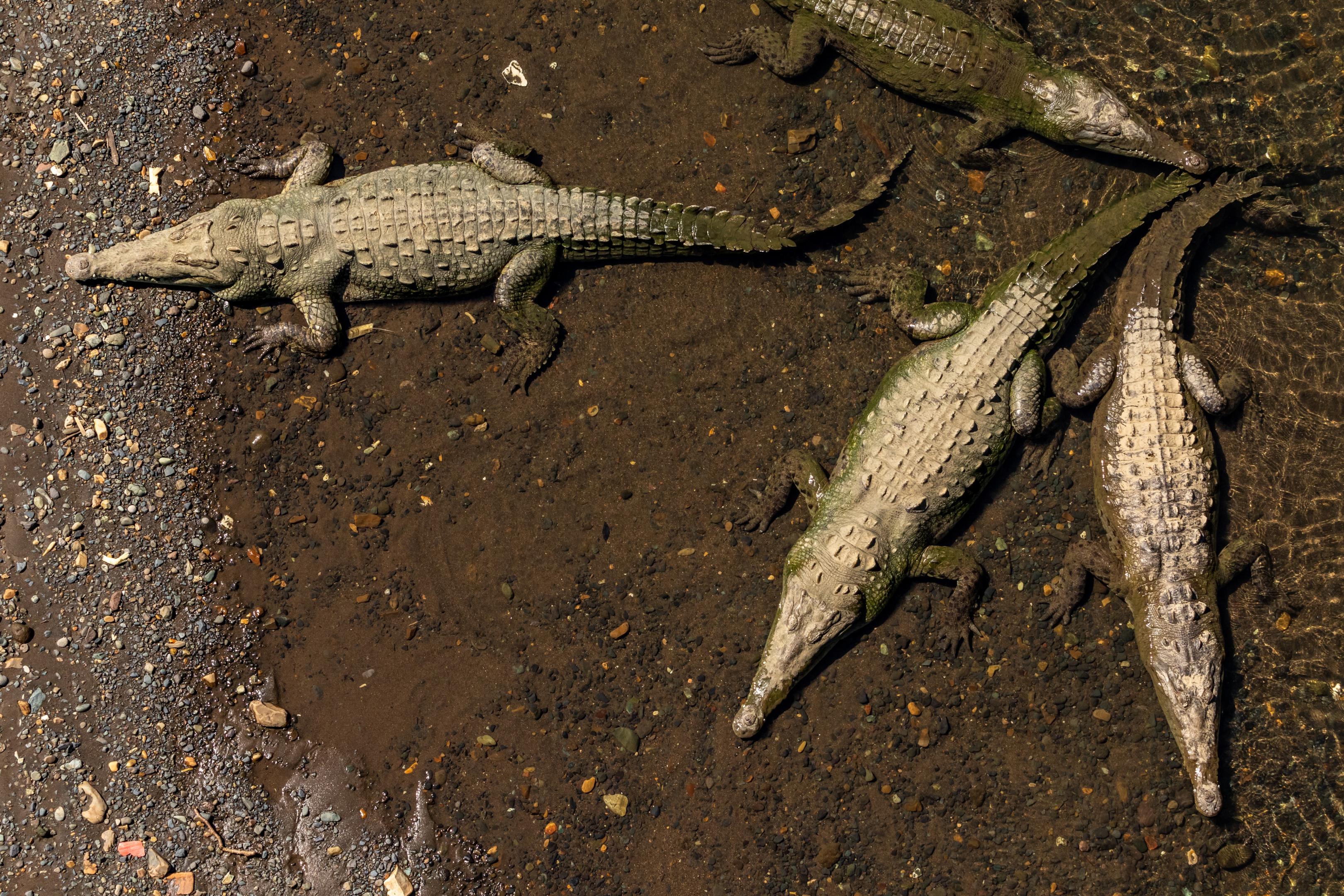
You can walk along the bridge to see the huge crocodiles in their natural habitat. The crocodiles, which can grow up to a whopping 16 feet in length, are often seen bathing in the sun on the riverbanks or swimming in the water.
The Tarcoles River is also home to a large number of other wildlife such as iguanas, monkeys, and a variety of bird species. Many tour operators offer guided boat tours of the river, allowing visitors to get even closer to the crocodiles and other wildlife.
Getting to Tarcoles Crocodile Bridge
To reach Tarcoles Crocodile Bridge in Costa Rica, visitors can take a car or bus on the Inter-American Highway. It’s about 20 miles (32 km) from Jaco and 50 miles (80 km) from San Jose. Tour operators also offer guided tours with transportation.
14. Eco Termales Hot Springs
You can never really go wrong with hot springs, and they make for amazing photo ops as well. Chances are, you’ve heard of Tabacon Hot Springs already, and it is indeed a very popular choice. However, when it comes to Costa Rica’s true natural gems, Eco Termales Hot Springs is easily one of the best options around.
Unlike Tabacon Hot Springs and other hot springs in the country, Eco Termales is not part of a resort/hotel but rather a standalone, 100% natural hot spring maintained and offered by a local family. Tabacon Hot Springs is one of the more expensive options on the list, which makes Eco Termales an even more enticing choice.
It is also one of the smallest and more secluded natural hot springs in the country let alone La Fortuna, making it one of the most intimate and Instagram-worthy spots around.
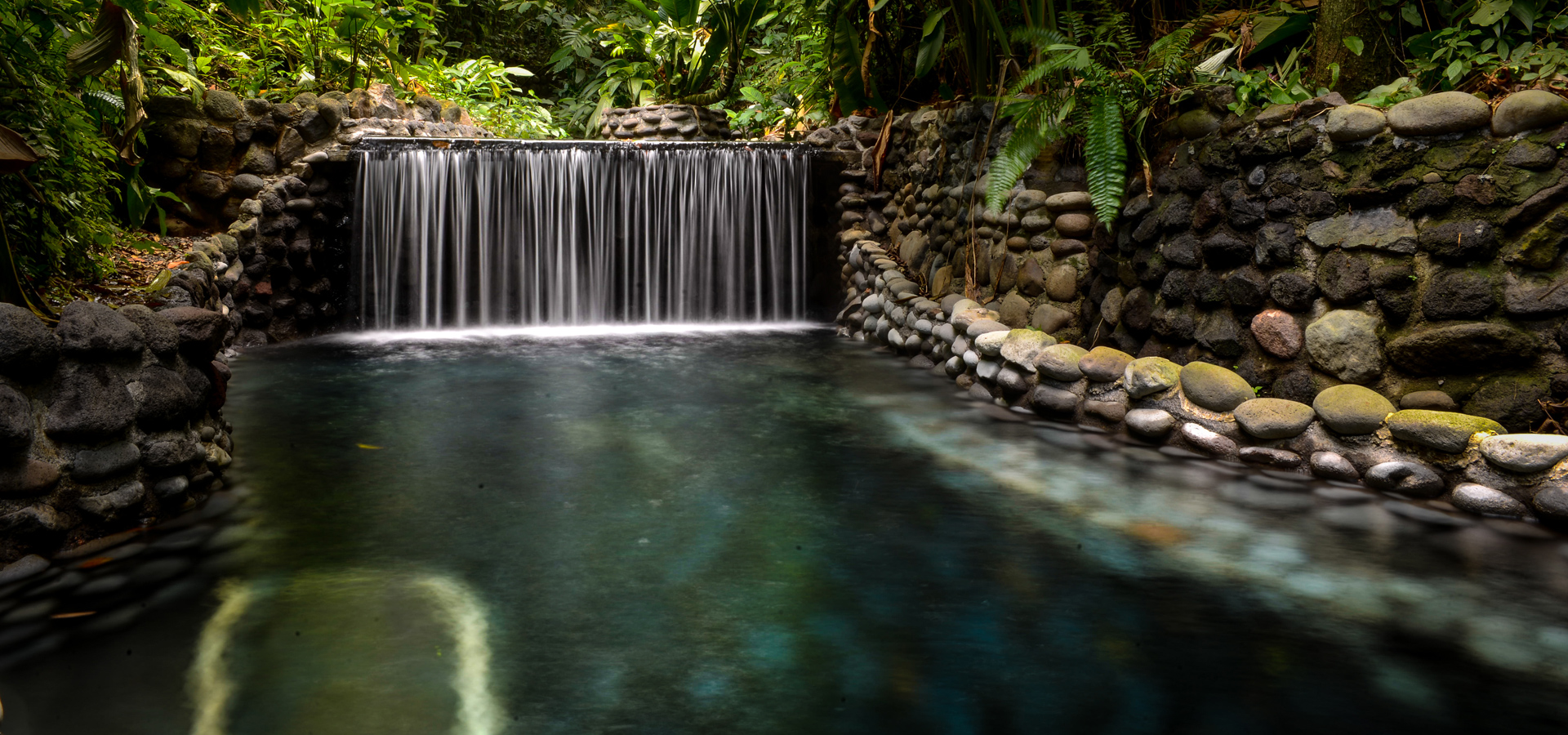
Getting to Eco Termales
This hot spring is located just 10 minutes from downtown La Fortuna, making it easy to reach for most. If you have a rental, you can simply drive there and park. Otherwise, I recommend taking a taxi or an Uber. Uber is less common but you can find a few available every now and then.
Best Costa Rica Instagram Spots: Summing it Up
A Central American country, Costa Rica is home to some of the most Instagrammable spots in the continent, let alone the world. You’ll find unrivaled views from the forest floor to the tree-top canopies, with a wide range of atmospheres from sandy beaches to cloudy forests. Some of the most Instagrammable places in Costa Rica bar include:
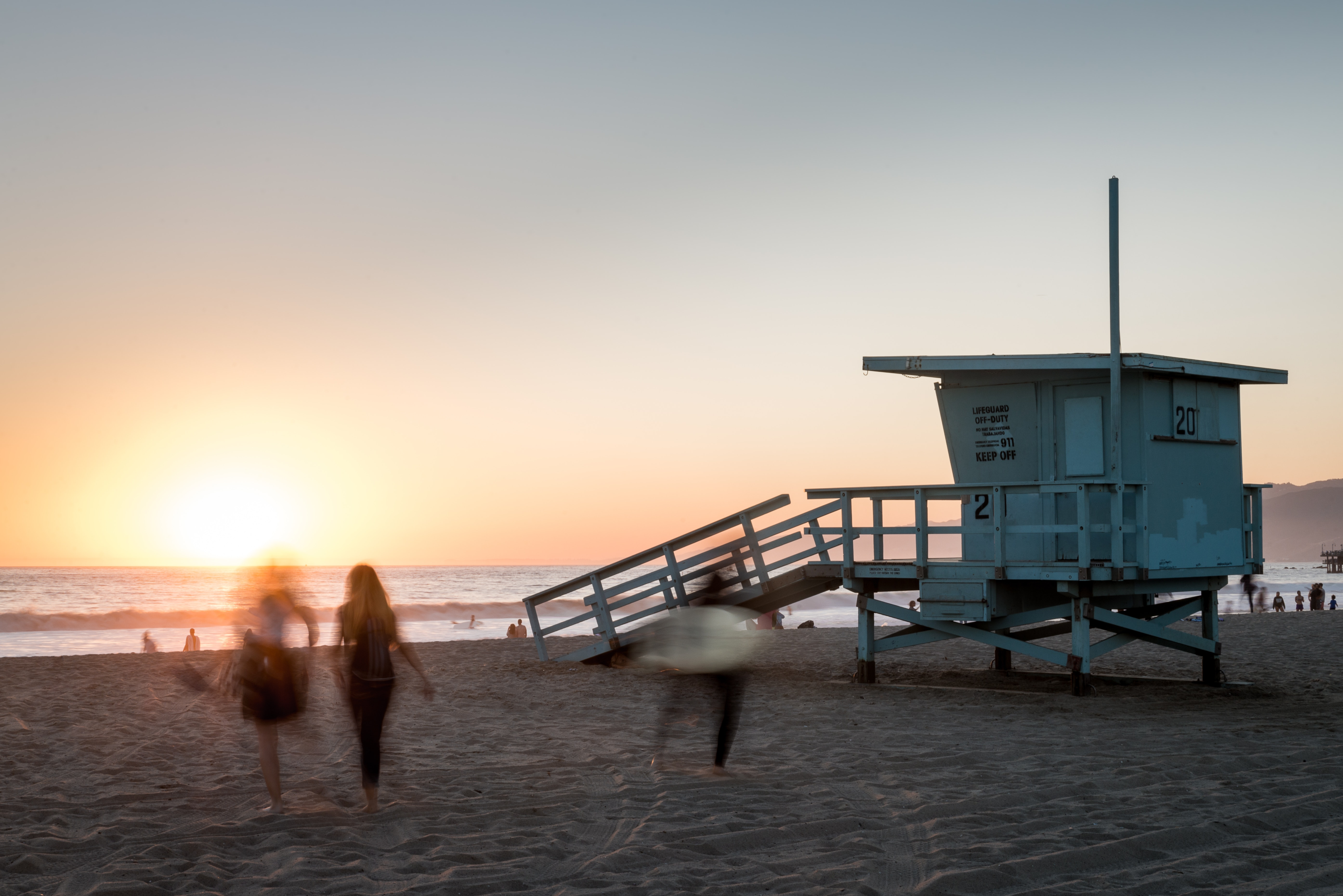
Some other noteworthy mentions not on this list include Playas Del Coco, Playa Conchal, Puerto Viejo, and Bajos Del Toro. Whether you’re a nature photographer, a culture enthusiast, or just in it for the selfies, the options listed above are some of the Costa Rica Instagram spots that won’t fail you.
So, grab your camera, plan your visit, and enjoy the amazing views of Costa Rica at one of these top photo destinations. Pura Vida!

